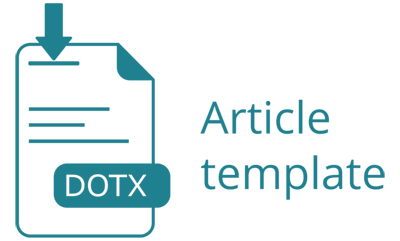Pengaruh Penggunaan Jenis Pelarut dalam Uji Sitotoksistas Metode Brine Shrimp Lethality Test (BSLT) pada Wound Dressing Kolagen-Kitosan
DOI:
https://doi.org/10.15575/ak.v8i1.10277Keywords:
Sitotoksisitas, BSLT, Kolagen, Kitosan, Pembalut Luka.Abstract
References
A. Andini, R. Handajani, S. Koesnowidagdo, M.Z. Ichsan, and L. Phiginelli, “In vivo effectivity of collagen extract from clarias gariepinus (Burchell, 1822) ‘ Sangkuriang ’ on formation of malondialdehyde and macrophages in burn healingâ€, Proceedings of the Pakistan Academy of Sciences, vol. 57, no. 3, pp. 35–40, 2020.
B. Triyono, “Perbedaan Tampilan Kolagen di Sekitar Luka Insisi Pada Tikus Wistar Yang Diberi Infiltrasi Penghilang Nyeri Levobupivakain dan yang tidak Diberi Levobupivakainâ€, Thesis, Pascasarjana Universitas Diponegoro, 2005.
A. Mohandas, S. Deepthi, R. Biswas, and R. Jayakumar, “Chitosan based metallic nanocomposite scaffolds as antimicrobial wound dressingsâ€, Bioactive Materials, vol. 3, no. 3, pp. 267–277, 2018
A. Andini and E. Prayekti, “Chitosan as antifungal in channa striata collagen chitosan for wound healingâ€, Medical and Health Science Journal, vol. 3, no. 2, 2019
A. Andini, E. Nidianti, and E. Prayekti, “Cytotoxicity assay of chitosan-collagen wound dressing using brine shrimp lethality test methodsâ€, Jurnal Biomedika, vol. 13, no. 1, pp. 9–14, 2020
A. Andini, R. Handajani, and Soetjipto, “Sangkuriang catfish (clarias gariepinus var) skin activity on fibroblast and collagen synthesis for skin burn healingâ€, Proceeding of Surabaya International Health Conference, pp. 347–351, 2017
L.M. Leong, A.Z. Sahalan, L.H. Tan, N.H. Mustafa, and N.F. Rajab, “Clarias batrachus collagen extract increases fibroblast cell adhesion, migration and proliferationâ€, Journal of Applied Pharmaceutical Science, vol. 5, no. 3, pp. 19–23, 2015
W.K. Song, D. Liu, L.L. Sun, B.F. Li, and H. Hou, “Physicochemical and biocompatibility properties of type I Collagen from the skin of nile tilapia (Oreochromis niloticus) for biomedical applicationsâ€, Marine Drugs, vol. 17, no. 3, pp. 137, 2019
P. Rahayu, F. Marcelline, E. Sulistyaningrum, M.T. Suhartono, and R.R. Tjandrawinata, “Potential effect of striatin (DLBS0333), a bioactive protein fraction isolated from channa striata for wound treatmentâ€, Asian Pacific Journal of Tropical Biomedicine, vol. 6, no. 12, pp. 1001–1007, 2016
S. Ahmed and S. Ikram, “Chitosan based scaffolds and their applications in wound healingâ€, Achievements in the Life Sciences, vol. 10, no. 1, pp. 27–37, 2016
F.R. Putri and S. Tasminatun, “Efektivitas Salep kitosan terhadap penyembuhan luka bakar kimia pada rattus norvegicusâ€, Mutiara Medika Jurnal Kedoktetan dan Kesehatan, vol. 12, no. 1, pp. 24–30, 2012
A. Octavian, “Kajian Sifat Fisik-Mekanik dan Antibakteri Plastik Kitosan Termodifikasi Kolagen Limbah Sisik Ikan Kakap Merahâ€, Thesis, Universitas Negeri Semarang, 2015.
W.T. Fajarningsih N.D., Januar H.I., Nursid M, “Potensi antitumor ekstrak spons crella papilata asal taman nasional seribuâ€, Jurnal Pascapanen dan Bioteknoogi. Kelautautan dan Perikanan, vol. 1, no. 1, pp. 35–42, 2006.
J. Soemirat, Toksikologi Lingkungan. 2005.
M.J. Meyer BN, Ferrigni NR, Putnam JE, Jecobsen LB, Nichols Dj, “Brine Shrimp lethality test : a convenient general bioassay for active plant constituentsâ€, Planta Medica, vol. 45, no. 5, pp. 31–34 1982.
D.A.P. Puspitasari, V.P. Bintoro, and B.E. Setiani, “The Soaking effect on different hydrocloride acid level and soaking time on Ph , Swelling percentage and collagen yield of chicken shank boneâ€, Journal of the Indonesian Tropical Animal Agriculture, vol. 38, no. 2, pp. 98–102, 2013
N. Istiqomah, D.I. Rudyardjo, and S. Sumarsih, “Pembuatan hidrogel kitosan – glutaraldejid untuk aplikasi penutup luka secara in vivo,†Jurnal Fisika dan Terapannya., vol. 1, no. 1, pp. 30–49, 2015.
A.A.R. Putra, “Pengaruh pemberian gel chitosan terhadap penyembuhan luka incisi pada tikus putih (Rattus norvegicus)â€, Jurnal Ilmiah Mahasiswa Veteriner, vol. 2, no. 4, pp. 442–449, 2018.
A.D. Muaja, H.S.J. Koleangan, and M.R.J. Runtuwene, “Uji Toksisitas dengan metode bslt dan analisis kandungan fitokimia ekstrak daun soyogik (saurauia bracteosa DC) dengan metode soxhletasiâ€, Jurnal MIPA, vol. 2, no. 2, p. 115, 2013.
A. Andini, E. Prayekti, D. Dyah Wulandari, and E. Nidianti, “Cytotoxicity assay using brine shrimp lethality test on collagen-chitosan wond dressing sterilized by ultraviolet lightâ€, Indonesia Journal of Medical Laboratory Science and Technology, vol. 2, no. 1, pp. 21–26, 2020
Z. Zuraida, “Analisis toksisitas beberapa tumbuhan hutan dengan metode brine shrimp lethality test (BSLT) (Toxicity analysis of forestry plants using brine shrimp lethality test (BSLT) method )â€, Jurnal Penelitian Hasil Hutan, vol. 36, no. 3, pp. 239–246, 2018.
N.K. Subekti, “Uji Toksisitas Akut Ekstrak Metanol Daun Laban Abang terhadap Larva Udang dengan Metode Brine Shrimp Lethality Test (BSLT)â€, Skipsi, UIN Syarif Hidayatullah Jakarta, 2014.
A.S. Afandi, “Penggunaan Dimetil Sulfoksida (DMSO) Sebagai Pelarut Untuk Analisis Uji Batas ‘Cemaran Organik Mudah Menguap’ Menggunakan Kromatografi Gasâ€, Skripsi, Universitas Airlangga, 2007.
E.N. Setyaningrum, “Efektivitas penggunaan jenis asam dalam proses ekstraksi pigmen antosianin kulit manggis (Garcinia mangostana L.) dengan penambahan aseton 60%â€, Jurnal Teknologi Hasil Pertanian, vol. 1, pp. 1–36, 2010.
G. Gao, L. and Mazza, “Ekstraksi Antosianin Pewarna Merah Alami dari Kulit Buah Manggis (Garciria Mangostana L.): Kajian HCl dan Aplikasinya Pada Youghurtâ€, 1996.
C. Samuel B.S. and F. Malau, “Pra Rencana Pembuatan Asam Asetat dengan Kapasitas 86.000 Ton/Tahunâ€, Skripsi, Universitas Sriwijaya, 2019.
N. Yuliasari, H. Herlina, and W. Aprianto, “Pengaruh Asam asetat terhadap konsentrasi Fe, Cu dan Protein daun eceng gondok (Eichornia crassipes),†Jurnal Penelitian Sains, vol. 14, no. 2, pp. 28–32, 2011.
Downloads
Published
How to Cite
Issue
Section
Citation Check
License
Authors who publish with this journal agree to the following terms:
- Authors retain copyright and grant the journal right of first publication with the work simultaneously licensed under a Creative Commons Attribution 4.0 International License that allows others to share the work with an acknowledgment of the work's authorship and initial publication in this journal.
- Authors are able to enter into separate, additional contractual arrangements for the non-exclusive distribution of the journal's published version of the work (e.g., post it to an institutional repository or publish it in a book), with an acknowledgment of its initial publication in this journal.
- Authors are permitted and encouraged to post their work online (e.g., in institutional repositories or on their website) prior to and during the submission process, as it can lead to productive exchanges, as well as earlier and greater citation of published work (See The Effect of Open Access).





